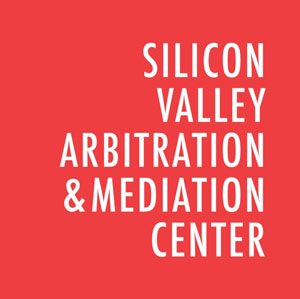Previously, on CTCC Blog: Silicon Valley Arbitration & Mediation Center was founded on the belief that the technology community has been slow to embrace ADR, a primary reason being the absence of an identified group of great neutrals with deep experience in high tech business. Technology enterprises, large and small, have defining characteristics making them a different breed from the traditional lynchpins of American capitalism.
“So what?” you may ask. My reply: Outstanding neutrals steeped in the nuances of tech business can bring qualitative competencies to the arbitration or mediation of those disputes. Identification of those neutrals and recognition of their skills should and will encourage high tech companies to rely increasingly on ADR processes.
Let’s agree at the outset that “High technology” is of uncertain provenance and debatable definition. Some might say, echoing Justice Black on obscenity, “I know it when I see it.” For me, “technology disputes” comprise any legal battle between technology companies. Eschewing word play, consider some examples of frequent tech disputes:
• IP litigation involving claims of infringement.
• Breach of Licenses, Technology Transfer Agreements.
• Trade secret theft.
• Employee poaching.
• FRAND and other Standard-setting disputes.
• Joint venture failures.
• Unfair competition and antitrust.
• Venture capital and other financing disputes.
• Distribution battles.
These and many other disputes that may spring from the fertile minds of lawyers share common threads, which help reveal the value of tech-savvy neutrals (such as those appointed to SVAMC’s Tech List).
First, and most basically: Technology disputes will inherently involve (no surprise) some technology. Like most of our teenagers—who daily demonstrate facility with iPhone apps, digital gaming, even the creation of spread sheets and graphics—lawyers who have spent years learning from their tech clients are seldom flummoxed by digital peculiarities. They have learned by doing, just as has Generation Y.
There is no mystery in that. You simply cannot effectively represent a technology company without a real understanding of their business—which necessarily includes its underlying technologies. Appointees to the SVAMC Tech List have handled litigation and ADR work in a whole range of high-tech industries, from software to medical devices, semiconductors to robots. Osmosis is a wondrous study technique.
Second: Those of us who have been lucky enough to work with tech clients appreciate technology’s unique mandate for working at the “speed of business.” For years, my clients “just had a quick antitrust question;” they blanched at the mere mention of a legal memo; the business decision could await only momentary legal analysis; and “please don’t put a young associate on this matter!” Speed is a key promise of ADR—all the more valuable in tech disputes. Quickly applying good judgment and experience in real time, to complex tech disputes, is a core competence those on the SVAMC Tech List have finely honed.
Third: Practical solutions take priority over formalistic exercises. It is not lost on CFOs and General Counsel that vast amounts of money and time flow freely in modern litigation. In dealing with the awkward unwinding of a failed technology collaboration, by contrast, dispute resolution led by seasoned, knowledgeable neutrals understandably has strong appeal. As our fearless leader Gary Benton recently commented in a Corporate Counsel interview: “When you’re doing an arbitration or mediation, there is just more of a dialogue between the parties, . . . There aren’t the formalities of a courtroom setting, so there is much more opportunity for the parties to step away from the proceedings and start talking about opportunity and collaboration.” E. Mintzer, “Litigate Different: Why the Tech Sector is Turning to ADR,” Aug. 12, 2015, available at http://www.corpcounsel.com/printerfriendly/id=1202734472525.
Fourth: In any given context, experienced tech lawyers have “seen it before.” They have a mental or digital catalogue of the various alternative business approaches and techniques that can work in the technology business. They will envision, for example, where an IP license can be a “win-win” resolution to the thorniest IP infringement battle. They will know which of many alternative forms of a non-disclosure agreement may be the most effective and enforceable.
Which brings us full circle. In summary: Technology enterprises in particular see litigation as life-threatening to their creation of “the next big thing.” ADR processes, whether arbitration or mediation, have obvious appeal when the spectre of litigation arises in technology disputes. Nevertheless, the technology industry has been slow to embrace ADR. We have founded SVAMC in the beliefs that:
• ADR is “business-positive” to technology companies of any size; and
• The ready identification and availability of skillful neutrals who have been steeped in technology businesses will greatly accelerate the technology community’s resort to ADR.
